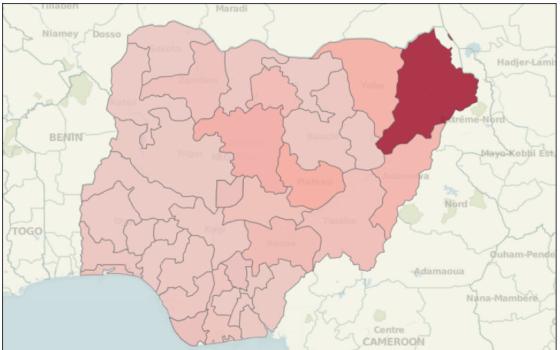In April, more than 200 Nigerian girls were abducted by the Islamist militant group Boko Haram. In the immediate aftermath, Nigeria had the world’s undivided attention and in October, a rumor began circulating that the girls would be returned as part of a cease-fire agreement between Boko Haram and the Nigerian government.
That didn’t happen. Boko Haram’s leader, Abubakar Shekau, says the girls have been sold as child-brides while the group continues to terrorize Nigerians. Meanwhile, international interest in the kidnapped girls has largely waned. This week, we’re bringing you three stats and a map highlighting Boko Haram and the conflict in northeast Nigeria.
- In April, the online effort to find the kidnapped girls centered on one hashtag: #bringbackourgirls. Less than a month later, the BBC reported that the hashtag had been used 3.3 million times. However, by July there were less than 7,000 #bringbackourgirls tweets worldwide.
- This April abduction was not the first. According to Human Rights Watch, Boko Haram has kidnapped more than 500 women and girls since 2009.
- In that same period of time, violence between Boko Haram and the government has reached unprecedented levels. In October, researchers at the Johns Hopkins University School of Advanced International Studies reported that Boko Haram-related violence accounted for more than 40 percent of all the deaths included in their Nigerian Social Violence Dataset.
This interactive map from the Council on Foreign Relations shows a state-by-state snapshot of where Boko Haram is most active in Nigeria.

